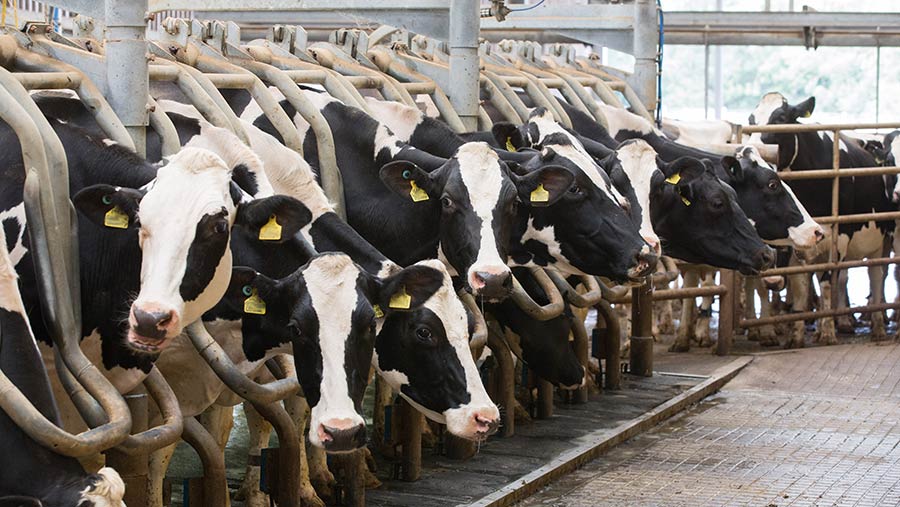Stable market is time for dairy sector to address challenges
 © Tim Scrivener
© Tim Scrivener Relatively stable milk prices and production offer a chance for producers to focus on costs and efficiency, says farm business consultant Andersons.
The firm has forecast a dip in the business surplus – essentially profit – to 2.8p/litre in the current milk year for its 200-head model dairy farm, with an improvement to 4p/litre in 2021-22.
The AHDB has forecast a slight increase in milk production for 2021, and any extra milk is likely to be exported.
See also: Surge in comfort eating sees dairy product sales boom
Outside the EU, the UK can consider alternative export opportunities, particularly in Asia, where milk consumption is bucking the trend and on the rise, says Andersons.
Worldwide demand for milk is slightly ahead of supply, supporting prices, and the Global Dairy Trade index is steadily improving.
Covid-19 impact
Though the spring flush is always a challenge, it’s unlikely Covid-19 will cause the same issues for producers it did during the first lockdown, says Mike Houghton, Andersons dairy specialist.
“There doesn’t seem to have been huge negative reactions from the businesses most affected last time – Medina Dairy and Freshways – and the takeaway market is still remarkably strong despite lockdown conditions,” he said.
The main issues to look out for are increased costs and the Basic Payment Scheme (BPS) reductions, says Richard King, head of business research.
Higher feed prices mean producers will have to focus on efficiency.
With a much larger wheat area this year, cost reductions may be on the horizon as the year progresses, he says.
Pivot towards block calving and solids
The next decade looks to be exciting but very changeable, Mr Houghton says, and it is more important than ever that farmers focus on the longer term and improving productivity, efficiency and profitability.
The more efficient farms – achieving higher yields from forage, high health and welfare, and low replacement rates – also have lower carbon footprints.
“As an industry we are lambasted for creating a lot of emissions when actually the sector produces only 2% of the UK’s whole emissions so it’s not a huge issue,” he says.
“We also capture a huge amount of carbon and one challenge is how to monetise that and bring the income back to our farmers.”
With the general decline in liquid milk consumption, Andersons believes it is likely that the sector will move more towards block calving systems and manufacturing contracts and away from the liquid market.
“Covid has helped increased the value of the liquid market with milk vending machines and milk being delivered during lockdowns, but a lot of our farmers were pushed into liquid milk production and year-round level supply and we know that’s not the most efficient way to produce milk,” Mr Houghton says.
Challenges for the dairy sector
Farm policy While little is known about policy so far, traditional agri-environment schemes have not offered much for dairy farmers. Environmental Land Management (ELM) will be wider in scope so may include more options relevant to them.
Regulations These (such as on emissions) could be a business threat, initially demanding large investments for no extra profit.
Reinvestment This will be largely driven by emissions requirements but also new technology about which the government may be more open-minded, such as gene editing.
Consumers and society The public perception of dairy is critical, including recognition of milk’s nutritional value and high UK production standards.
Getting the right people This is a real challenge for the whole of agriculture. People need to be paid fairly for what they do and that needs to be built into the cost of production. Succession plans and joint ventures can also be useful in managing this.
European workers The dairy sector is reliant on overseas workers and the paperwork around Brexit and Covid-19 has been challenging. Some workers are seeing panic spread by social media and not communicating with their employers or the government to confirm that they can still have safe passage to the UK after they have been home for a break. It is possible to re-enter.
Source: Mike Houghton and Richard King
